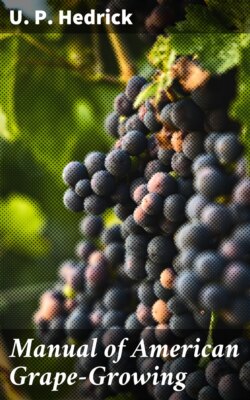Читать книгу Manual of American Grape-Growing - U. P. Hedrick - Страница 25
На сайте Литреса книга снята с продажи.
Length of season.
ОглавлениеTo reach true perfection, each grape variety has a length of season of its own. With each, if it is grown in too low a latitude, the vine is uninterrupted in growth; its leaves tend to become evergreen; and not infrequently it produces at the same time blossoms, green fruits and ripe fruits. This is, of course, the extreme to which grapes pass in the far South. Again, many northern varieties fail where southern grapes succeed because the fruits pass too rapidly from maturity to decay. On the other hand, very often southern grapes are hardy in vine in the North, but the season is not sufficiently long for the fruit to mature and to acquire sufficient sugar to give them good keeping quality, properly to pass through vinous fermentation, or even to make a good unfermented grape-juice. In the uneven topography of this continent, it is not possible to state the range in latitude in which grapes can be cultivated to advantage, for latitude is often set aside by altitude. Thus, isothermal lines, or lines of equal temperature, are much curved in America and do not at all coincide with the parallels of latitude.
Other factors, of course, than length of season enter into the ripening of grapes. The daily range in temperature, not always dependent on latitude, affects ripening. Cool nights may offset warm days and delay ripening. Certainly rains, fogs and humid air delay maturity. The bottom heat of loose, warm, dry gravelly or stony soils hastens maturity. Sunshine secured by a sunny aspect or shelter hastens maturity.
